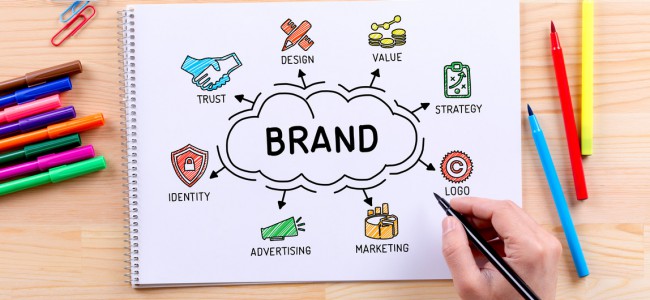Date: Feb 2019
The shifting media landscape as well as changing consumer demands have indeed transformed the entire marketplace. The digital and social media platforms have created a “crisis” for traditional marketing and public relations.
The disruption we have witnessed in this digital world has effectively displaced the monopoly of mainstream media as the primary source of information for consumers and even governments. Gone are the days when businesses can build their brands primarily through singular advertising and promotion strategies as today’s media landscape cuts across various paid, earned, owned and shared platforms.
Moreover, research has proven that people are more likely to trust what their friends and family share about a company or brand rather than listen to one-way messages. The democratisation of information makes it difficult for any party to monopolise information, more so in a crowded and cluttered marketplace with “voices” coming from all directions!
Age of #Fakenews – Crisis or opportunity?
Whilst digital and social media channels have made it easier to disseminate information, they have also made it impossible to stop the spread of fake or bad news. Fake or bad news and rumours about a brand can now be spread to thousands at the speed of a finger tap. According to a Reputation Risk Report released by BrandWatch UK, British brands and businesses say dealing with negative online content is now their number one commercial concern.
This concern has become so prevalent that Whatsapp has announced that it will be starting a new feature to label forwarded messages in a bid to fight the spread of fake news.
So yes, this new media landscape, where anyone can say anything online, can indeed create crises for brands and organisations. However, there’s a reason why the Chinese word for “Crisis” combines the characters for “Danger” as well as “Opportunity”. There are many dangerous pitfalls for brands in this free-for-all online space, but they are also tremendous opportunities to become trusted and resilient.
Never before have brands and organisations been given direct access to consumers without any media filters. In fact, the most urgent and important messages from brands can now be communicated instantaneously via Twitter and Facebook. Consumers can get the facts directly from brands, allaying any fear of being misinterpreted by the media.
Brand + Reputation – Inside-Out, Outside-In
The fundamentals of brand building do not change despite the evolving environment. Brands are built by people and in any company or organsation, it is from the inside-out. On the other hand, reputation is something we need to earn from our stakeholders – outside-in. We can’t just demand for a good reputation from our various stakeholders.
In today’s context, it becomes even more crucial not just to build mere brands or names but one that eventually is able to gain the trust, confidence and support from its stakeholders. This level of rapport will create brand resilience during good or bad times.
This inter-dependency between brands and reputations, if cultivated and built over time, will place the company and its brands in a stronger position to grow its businesses and this is where the new mediascape presents a blue ocean opportunity for brand building.
1. Don’t tell, engage. Don’t speak, communicate
First, the absence of any form of “media filter” presents a great opportunity for brands, businesses and even government entities to engage with their stakeholders directly.
Where previously branding was a labour-intensive and time-consuming science, employing target market surveys, focus groups and message testing to try and create a compelling one-way message, online and social media has made it possible to directly engage with audiences personally.
This makes the brand engagement and communication process very “organic and human” because brands now have two-way communication with audiences and stakeholders. There is so much that brands, businesses and government entities can do in the shared space. For example, they can now invite feedback from stakeholders directly and get immediate responses. They can also open up for user generated content, giving stakeholders an interest in the branding process and thus, enabling more loyalty and engagement with the brand. This is a great way to build a solid reputation with them.
In light of the speed and reach of online and social media communications, many companies call in external experts to help with their online strategies. But digital strategies alone are not the answer. Which brings me to my second point.
2. Going digital alone is not enough
Many companies misunderstand the role and relevance of digital and social media. It is very important to remind ourselves that the game-changer in brand building is not to employ a “digital strategy”. Instead, our strategy for today and tomorrow must be anchored on the fact that the world is now a digital marketplace.
In this regard, digital communications are actually only one aspect of the new media landscape. Online and social media have their advantages, but they are not the be-all and end-all.
Digital activations must be enriched with “real world” activations for it to be truly successful. After all, the nature of social media is as a platform for users to share what is happening in their lives away from it – whether it is in the real world or another virtual world.
Brands need strategies to sustain its engagement within this environment to earn their reputations, because stakeholders will decide how much of their time, energy, and money you are worth, based on how much value that is placed on your reputation. You need to prove yourself again and again by having real engagements with stakeholders to truly win people’s trust and loyalty.
3. Employees – your most powerful brand ambassadors and micro-influencers
Branding campaigns by themselves cannot deliver on brand promises. All stakeholder interfaces – front counters, staff meetings, telephone calls, online media and product quality – must support the brand values. And in all cases, employees are not just the ambassadors of the brand but the influencers of stakeholders.
Thus, our difficult journey of fostering brand influencers starts from within the company. A brand campaign won’t work if the “heart” of the organisation – its people – is not first aligned to the brand’s values and corporate culture.
The old adage that “people are our greatest asset” is true. If your internal stakeholders are excited with your brand and what it stands for and are proud to be associated with it, they will be the best micro-influencers and ambassadors for you. For example, in the online space, whether on their own social media or the brand’s, they would be able to effectively carry the voice of the brand to other stakeholders. In the real world, they will be an invaluable source of word-of-mouth communication.
4. Internal culture and communications is key
Organic word-of-mouth is like the holy grail of communications. Companies fork out big bucks to agencies and consultants to develop ideas that would generate good word-of-mouth. If you can create that kind of excitement for your brand within the company, imagine the cost/benefits of your internal communications exercise!
However, I find it strange that many companies still put communications with employees as a low priority. For example, a company might launch new products or programmes without having briefed the staff first or gotten their feedback at all. In such cases, the employees have no stake in the programme and are disengaged. If the internal stakeholders are not engaged with the brand, how effective can they be to engage external audiences? Would they be able to fairly and enthusiastically represent their brand in their interfaces with external stakeholders?
In today’s empowered society, employer branding and internal staff initiatives are an integral part and parcel of any marketing and branding initiative. Hence, the culture of a company must embody the brand values, and good internal communication plays a crucial role in imparting this value to employees.
The key to having a resilient brand
Building a resilient brand backed by a great reputation is hard because you can’t just tell people to like, believe in or trust you. You have to work hard to show that you are a brand that deserves it. Companies that fail to deliver on their brand promises, i.e. their behaviour is inconsistent with the brand values they espouse, will inevitably face an erosion of trust leading to a bad reputation among stakeholders.
Establishing trust requires a brand to consistently display positive actions and messages. That takes time. And no, there is no short cut. But the effort and resources you spend on building a strong brand will be worth its weight in gold in times of crises, because your accumulated goodwill and reputation can help blunt some of the force. You may even see an organic defense of the brand in the market, some level of forgiveness for a mistake, or some healthy level of doubt if fake news is being spread about your brand.
Simple Steps:
In the Digital Space
1. Your digital assets including website, social media channels are your Store Front or Customer Service Centres. They are your Face to the World
2. Your Messages must be strategic and meaningful to the target audience – gone are the days of “one size fits all” messages
3. Engagement Platforms must be available – use social channels to complement all other available non-digital channels
In the Real world
4. Build internal excitement first – the foundation of any communication exercise
5. Employee Communications must gear towards building the internal team as Micro Influencers
6. Marry Digital and Real World initiatives – it is a digital marketplace today – it is not possible to separate them
This article was first published in the Malaysian Business by Perspective Strategies



